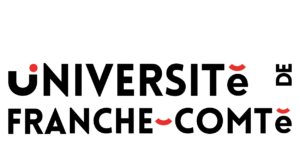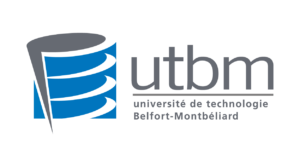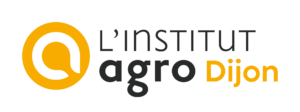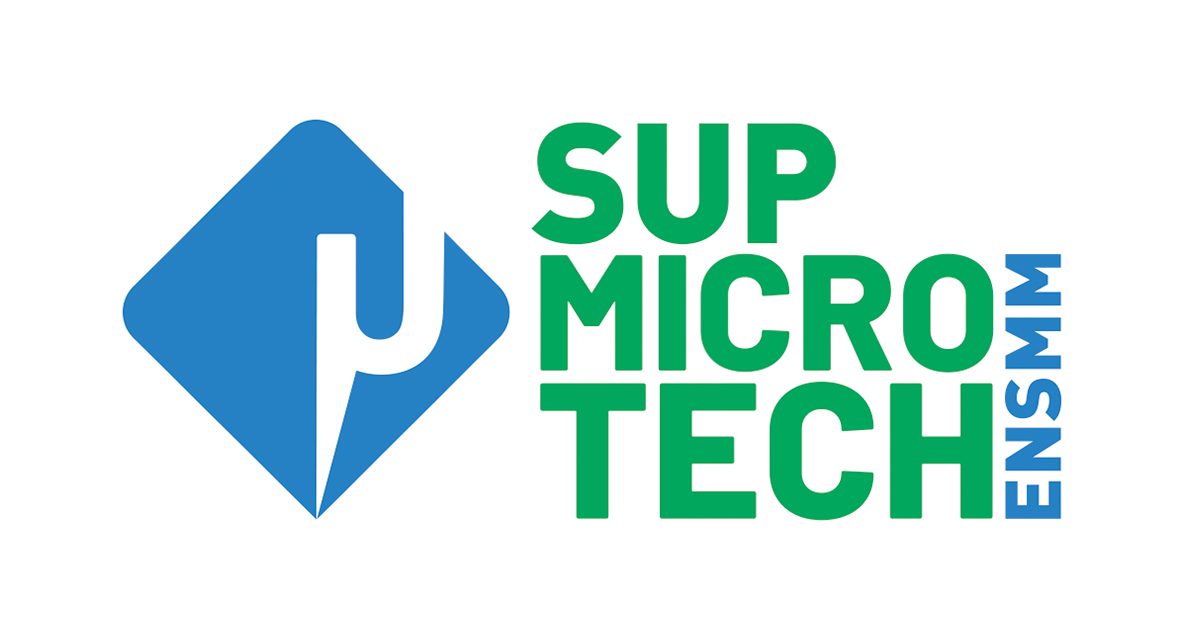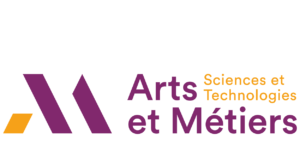Integrated projects
Integrated projects are “top-down” projects. Their purpose is to integrate the ISITE-BFC dynamics into each of the priority axis and thus, guide tomorrow’s research.
These projects fulfill one or more of the following criteria:
- Integration of all the partners in the ISITE-BFC research dynamic.
- creation of infrastructures favoring:
-
- the candidacy of talented international researchers for international fellowships.
- the revision of the objectives of UBFC researchers to ensure that they are in line with one of the priority axes
- the emergence of internal interdisciplinary projects.
This project concerns the development of photonics, a modern terminology covering all aspects of optics, lasers and their applications which are gradually spreading in all areas of human activity: communications, environmental analysis, medicine, material processing etc. The fundamental possibilities of optics in its wave, quantum and nonlinear aspects are explored and exploited to develop photonic devices at the international state of the art with innovative functionalities.
The ICB (Dijon) and FEMTO (Besançon) laboratories aim to develop, within the framework of the APPEAR project, an experimentation and characterization platform essentially oriented towards the mid-infrared domain, first in the optical spectral band included between 2 and 3 microns, then in the 3-5 micron range. This strategic orientation targets numerous project developments in this wide spectral range, which includes development of materials and processes, as also taking place on the international scene. The current scientific frenzy in the direction of the mid-infrared reflects many possible applications, in particular in the fields of health, environment and communication. In fact, infrared between 2 and 5 microns covers spectral regions of interest for spectroscopy holding the molecular fingerprints of simple to complex molecules (greenhouse gases, atmospheric pollutants, toxics and explosive, etc.) as well as atmospheric transparency windows that can be used for communications toward space.
The APPEAR project concretely allows:
- To reach a critical mass of high-performance equipment in the infrared field, including the possibility of characterization at an optical wavelength up to 5 microns, as well as the support of staff essential for the implementation of related experimental projects;
- To promote, through the presence of available pooled equipment, the development of collaborations between the ICB and FEMTO-ST laboratories.
Coordinators :
Philippe Grelu
ICB – UMR 6303 CNRS-uB – UBFC
Photonics Department
philippe.grelu@ubfc.fr
Maxime Jacquot
FEMTO-ST – UMR 6174 CNRS-UFC – UBFC
Optic Department Optique
maxime.jacquot@ubfc.fr
Collaborator labs:
| This project is co-funded by the BFC Region |
 |
While most analyses of the severe housing affordability crisisand contemporary environmental issues are posed separately on a large scale,or focus on the situation of large cities, this integrated project of the I-SITE BFC is driven by a triple ambition:
deal with the interactions between private and public landsmutually linkedin their economic, social and environmental dimensions;
capture these interactions at the regional level of Bourgogne Franche-Comté region on the basis of three themes emblematic of relatively sparsely populated European regions, namely urban green spaces, forested areas and agricultural lands; i
thanks to the synergy of more than 65 agents from 6 laboratories in Besançon and Dijon, our analysis is interdisciplinary between social and environmental sciences in order to broaden the scope of the work of our respective laboratories, both in our various academic fields and in terms of public decision support.
By analyzing the interactions between public and private lands over time and over the whole urban-rural-naturalgradient, we address two main questions: which properties for which uses and for which development opportunities? Which public policies are best adequateto respond to the major environmental issues surrounding land and its uses?
Coordinators:
Francis Raoul
Chrono-environnement / Université de Franche-Comté
francis.raoul@univ-fcomte.fr
Nicolas Renahy
CESAER / INRAE
nicolas.renahy@inrae.fr
Collaborator labs:
| This project is co-funded by the BFC Region |
 |
PERSONALISE is the result of a strong ambition for research in rare/common diseases and oncology, continuation of partnerships woven for many years by the actors of Bourgogne-Franche-Comté. This project aims to be at the center of the I-SITE ecosystem bringing together all the key actors in research, care, education and valorization on its territory, people acting for patients and their families (GIMI, FHUs TRANSLAD/INCREASE, LipSTIC Labex, EquipEx IMAPPI, CGFL, CHUs Dijon/Besançon, EFS BFC, INSERM, Université Bourgogne Franche-Comté, Clinical Investigation Centers).
In the therapeutic field where precision medicine takes off and new technologies are emerging, PERSONALISE wishes to capitalize on four strong axes in order to develop new diagnostic and therapeutic approaches for the benefit of healthcare professionals and patients affected with rare/common diseases or cancer:
- The development of genomics, molecular imaging and pathophysiological signature,
- The development of innovative therapy and clinical trials, in particular immunological approaches, to promote the passage of research towards the patient,
- An important work on ethical, economic and social issues through human social science research projects,
- The professional teaching and patient’s information to make the most advanced information in precision medicine available and to permit patient empowerment.
PERSONALISE aims to have transdisciplinary and integrated approaches that make it possible to take better account of patient issues. Playing also a catalytic role in the economic development of industrial companies, PERSONALISE is therefore destined to become an inescapable player in the French health landscape thanks to the complementarity of its scientific, medical and social approaches, its ability to forge links with local players (professionals and the general public in particular) and its close proximity to the industrial world.
Coordinators :
Christel Thauvin
Centre de Génétique, Hôpital d’Enfants, CHU Dijon Bourgogne
christel.thauvin@chu-dijon.fr
François Ghiringhelli
UMR1231, LNC, Center Georges François Leclerc
FGhiringhelli@cgfl.fr
Olivier Adotevi
INSERM UMR1098, CHU Minjoz
olivier.adotevi@univ-fcomte.fr
Collaborator labs :
- U1231, LNC Lipide Nutrition Cancer
- U1098, Interaction Hôte-Greffon-Tumeur, Ingénierie Cellulaire et Génique
- ICMUB, Institut de Chimie Moléculaire Université de Bourgogne
- LEDi, Laboratoire d’Economie de Dijon
- Psy-DREPI, Dynamique RElationnelles et Processus Identitaire
- UMQVC, Unité de méthodologie et de qualité de vie en cancérologie
| This project is co-funded by the BFC Region |
 |
Cross-disciplinary structuring projects
1st AXIS
The development of value chains for the transformation of local vegetal biomass, such as wood, hemp, and flax, into engineering materials is necessary to answer to the global concerns over environmental issues and to ensure an ecological transition towards the sustainable development of various industrial sectors such as transportation and construction. This class of materials can be an alternative to traditional materials to reduce the carbon footprint and strain on the environment. The Bourgogne-Franche-Comté region has clearly a role to play in this transition given its rich and varied forest heritage and the revival of hemp cultivation on its lands.
The WooFHi project aims at developing a new sustainable class of hybrid composite materials whose constituents come from this local biomass. The main objective is to optimize and homogenize heterogeneous and variable wood-based materials by lamination and hybridization with natural fibre composites and to study their durability for structural applications targeted in the transportation sector. The project brings together three research teams from the University of Bourgogne-Franche-Comté (UBFC), namely FEMTO-ST Institute in Besançon, LaBoMaP from Arts et Métiers Institute of Technology in Cluny and DRIVE at ISAT in Nevers, with complementary skills and internationally recognized for their unique expertise in the field of wood, plant fibres and biobased composites.
Coordinator:
Vincent Placet
FEMTO-ST – UMR 6174 (CNRS, uFC, ENSMM, UTBM)
Coordinator:
Alexandre Bouhelier
ICB – UMR 6303 (CNRS, uB, UTBM)
The PATH project aims to contribute to the development of ecosystems based on hydrogen energy, which are technically, economically, socially and environmentally sustainable, spreading at the scale of a region. It targets three objectives: on the one hand, the development of materials adapted for a cell operating at high temperature reversible, that is to say capable of producing hydrogen from the electrolysis of water or electricity from hydrogen, on the other hand the development of a simulator of hydrogen ecosystems based on low temperature components, and finally the evaluation of profitability and the value generated by these technologies based on case studies in the Bourgogne Franche-Comté region. The project involves a multidisciplinary consortium in materials, energy and economics, consisting in six research groups from four laboratories, FEMTO-ST, ICB, DRIVE and CRESE and the center for service and research FCLAB.
Coordinator:
Marie-Cécile Péra
FEMTO-ST – UMR 6174 (CNRS, uFC, ENSMM, UTBM)
2nd AXIS
For several years, the DImaCell imaging facility has maintained and developed a high-level microscopy and spectroscopy photonic facility for researchers of Bourgogne-Franche-Comté. Most of the techniques currently available rely on the use of fluorescent probes, which generally have to be constructed and introduced into samples.
However, there are microscopy/spectroscopy methods that do not require any addition of fluorescent molecule but rather use the vibrational properties of molecules naturally present into the sample, to characterize them. These are Infrared (IR) and Raman spectroscopies. Recent advances allow these techniques to be simultaneously used in microscopy with presently unmatched image quality.
With this future microscope (unique in France), it will be possible to follow the location and movement of molecules of interest (pollutants, drugs, proteins, lipids, etc.) within a living cell structure without prior treatment. The targeted applications cover all fields of research on living organisms: medicine, plant and animal cell biology, microbiology, food science … but also chemistry: physicochemistry, polymer science, biochemistry, etc.
Website: http://dimacell.fr/
Coordinator:
Jean-Marie Perrier-Cornet
PAM – UMR MA AGROSUP (uB, AgroSup)
Background: In the first years of life, the child learns to eat and to tolerate the introduction of food as a result of food experiences. An earlier observational study highlighted the particular role of cheese consumption in protecting against food allergies and atopic dermatitis (Nicklaus et al, Allergy, 2019): the microbial ecosystem of cheese is considered a potentially key element. modulator of the intestinal microbiota and the immunity of the child.
Objectives: The aim of “Fromicrobiote” is to better understand the effect of the consumption of cheeses in early childhood on the protection against allergic diseases, by seeking to control this consumption at key ages and by focusing on the mediating role of the intestinal microbiota in the postnatal modulation of immunity, while studying in parallel the psychosensory reactions of children towards cheeses.
Methods: To study these questions, we will set up a randomized controlled trial on children at risk of developing an allergy, by constituting two arms: a “control” arm with usual consumption of cheese and an “intervention” arm with compulsory consumption. of cheeses.
Coordinator:
Sophie Nicklaus
CSGA – UMR 6265 – 1324 (CNRS, uB, AgroSup Dijon, INRAE)
Partners:
– UR TAL (Poligny)
– CHU Dijon
– UFC
– CHU Nancy
– UMR Micalis (Jouy-en-Josas)
– UMR MTS (Saclay)
In France, undernutrition affects 4 to 10% of old people living at home and 15 to 38% of those living in nursing homes. Despite the existence of care strategies for older people, undernutrition remains frequent and is associated with an increased risk of morbidity, loss of autonomy, and mortality. Through a participatory approach putting old people in the center of the project, NutriAGE will develop nutritional solutions that will be both, holistic and personalized. Through its tailored dietary approach favoring a good-aging process, the NutriAGE project perfectly fits axis-2 and axis-3 of the I-SITE project. This interdisciplinary project will combine and expand the perimeters of three existing projects funded by ANR or involved in the LipSTIC LabEx project. It will bring together researchers from the CSGA (Dijon) and EA4267 PEPITE laboratory (Besançon) as well as clinicians from Internal Medicine Geriatrics and Ophthalmology departments of Dijon University Hospital.
Through a clinical study involving old people living at home, NutriAGE will set up a screening methodology for a simple and personalized biological monitoring of the nutritional status. It will be based on an at-home, self-processing dried blood spot sampling for further at-distance analysis. Guidelines and nutrient-enriched recipes will be designed in parallel in order to prevent the nutritional deficiencies highlighted by biological analyses. We will pay a particular attention to the macro- nutrients associated with the risk of protein-energy malnutrition as well as to the lipophilic nutrients that are associated with the risk of Age-Related Macular Degeneration (AMD), these two pathologies being directly linked to a high-risk of dependency. The development of dietary recommendations and recipes will be carried out in association with old consumers as well as with their caregivers in a very- early process and through co-creation approaches. This will allow taking into account the habits, the beliefs and the expectations of old people as well as ensuring their compliance in real life. Finally, and because situations in which the dietary approach will not be sufficient, NutriAGE will also develop the basis of an intervention study based on nanovectorized nutrients. These will be designed to be incorporated into food products and/or to be directly delivered to subjects. The results obtained within the NutriAGE project will be communicated through various dissemination, promotion and training actions. The practical and technical tools developed for the biological determination of the nutritional status, the nanovectorization of nutrients, and the building of personalized food solutions may be used for valorization actions.
Coordinator:
Niyazi Acar
CSGA – UMR 6265 – 1324 (CNRS, uB, AgroSup Dijon, INRAE)
The measurement of micro-contaminants in water, and in particular in groundwater, is both of environmental, economic and public health issues. The SENSAAS (SENSors and Analyses for AquiferS) project aims at developping innovative sensors and strengthen the capabilities of UBFC platforms to analyse some micro-pollutants of societal interest (microplastics, organic matter, antibiotics, biocides and trace metals). It is organized into 3 axes associated with issues at the forefront of international research: 1) Development of molecular footprint materials for the determination of specific antibiotics and articulation with the quantification and characterization of antibiotic-resistant bacteria; 2) Development of new methods for quantifying microplastics and organic matter; 3) Optimization of FO-DTS technology (measurement of distributed temperature by optical fibre) and development of an innovative Raman spectroscopy method to characterize underground flows and quantify metallic micropollutants.
Coordinator:
Hélène Celle-Jeanton
Chrono-environnement – UMR 6249 (CNRS, uFC)
3rd AXIS
The PERSONALISE project, dedicated to personalized genomic medicine, is an integrated and federating project of the ISITE-BFC priority area 3. PERSONALISE is positioned at the interface between clinical, diagnostic, therapeutic and research components, fundamental research and innovation in genomics and pharmaco-imaging. Its ambition is to develop new diagnostic and therapeutic approaches for health professionals and patients suffering from rare/common diseases or cancer.
In 2021, the ISITE-BFC will finance cancer research within the GIMI Institute by investing in high-performance technical equipment for the development of molecular imaging and studies for the identification of specific biological, metabolic and immunological markers. It also supports research in rare diseases within the FHU TRANSLAD through the development of new genomic technologies, innovative therapies, and clinical trials, as well as human and social science studies in the field of genomic medicine.
Coordinator:
Christel Thauvin
LNC – UMR 1231 (INSERM, uB, AgroSup)
Partner:
– CHU Dijon
Part 1
It is common to point out that with age, motor, perceptive, and cognitive functions decline at a more or less significant rate depending on the individual, and independently of any trouble or disease. Acquiring new abilities or skills, or modifying habits, becomes indeed progressively more difficult with healthy aging, making continuous adaptation to a changing environment more challenging in the elderly than in young people. The present project aims at testing a hypothesis for explaining the difficulties encountered by aged people in acquiring new cognitive or motor skills, or in maintaining their current abilities at a satisfactory level for as long as possible. Precisely, it is suggested that with aging, deficits in forming chunks of separate elements progressively appear and that this deficit might largely account for cognitive decline in healthy aging. This hypothesis will be tested through a series of experiments dealing with implicit learning paradigms with different modalities (i.e., visual, auditory, and motor abilities) and by using techniques such as eye tracking and electroencephalography to track learning online.
—
Part 2
Decision-making is the cornerstone to all human activities, and the underlying neurocognitive mechanisms have been the object of a considerable research effort over the past 50 years. This research has resulted in sophisticated models able to predict behavioral performance in choice laboratory tasks, as well as the underlying neurophysiological activities. According to these models, decision-making is based on a mechanism of evidence accumulation from different sources, particularly our senses and memory. This mechanism ends when a criterial amount of accumulated evidence is reached, strategically regulated according to the goals of the decision-maker.
Although most of our decisions are communicated through motor actions, the links between decision-making and motor control remain largely unknown. The first part of this research project will test the hypothesis that the evidence accumulation variable underlying decision-making propagates into the motor structures that prepare and execute the response. According to this hypothesis, motor control is directly determined by the decision-making mechanism. This hypothesis will be tested through a series of experiments combining behavioral and electrophysiological measurements and mathematical modeling. The new models of decision-making and motor control will then be applied to a variety of mood, personality, and addictive disorders, with the aim of providing theoretical insight into pathological decision-making and impulsive behaviors, as well as elaborate remediation strategies.
—
Part 3
Physiological and pathological aging is associated with changes in several structures and functions of the brain. These changes then reverberate as changed behaviors. It has been proposed that certain changes in brain function can compensate for other deteriorated ones, thus preserving behavioral performance. Dismantling deteriorated versus compensatory processes represents invaluable knowledge that could significantly improve the prevention and rehabilitation of age-related mobility loss. Current research does not provide an understanding of the compensation vs deterioration processes. Our research project aims to study motor control and learning processes (motor planning, motor optimization, internal model calibration, sensory integration, etc.) in healthy and pathological aging.
Coordinators:
Part 1 : Bénédicte Poulin-Charronat / LEAD – UMR 5022 (CNRS, uB)
Part 2 : Emmanuel Haffen / LNIC – EA 481 (uFC)
Part 3 : Charalambos Papaxanthis / CAPS – UMR 1093 (INSERM, uB)

